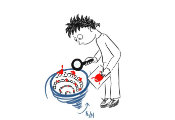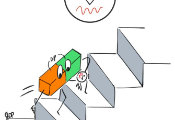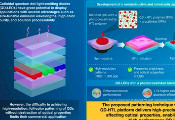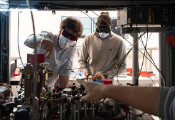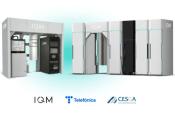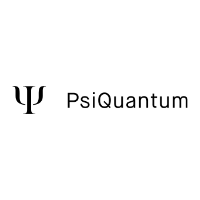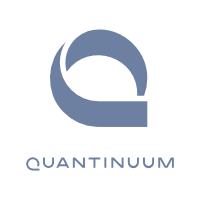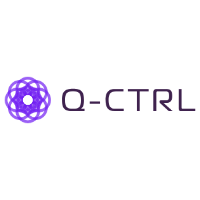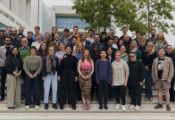Reverse Gear in the Quantum Tunnel
May 27 2025 -- Under-the-barrier recollision dynamics in strong field ionisation of xenon is revealed both theoretically and experimentally by the theory division at MPIK and the Pohang University of Science and Technology in Korea.
Tunneling is a peculiar quantum phenomenon with no classical counterpart. It plays an essential role for strong field phenomena in atoms and molecules interacting with intense lasers. Processes such as high-order harmonic generation are driven by electron dynamics following tunnel ionisation. While this has been widely explored, the behaviour of electrons under the tunnelling barrier remained obscure though being equally significant. The understanding of laser-induced strong field ionisation distinguishes two scenarios for a given system and laser frequency: The multiphoton regime at rather low intensities and tunnelling at high intensities. However, most strong-field experiments have been carried out in an intermediate situation where multiphoton signatures are observed while tunnelling is still the dominant process.
Fig. 1 illustrates the different mechanisms: (a) Direct multiphoton ionisation promote the bound electron into a free state. It may be resonantly enhanced via an excited state (Freeman resonances) if the corresponding transition energy matches the sum energy of an integer number of photons. Free or highly excited electrons are driven back and forth by the oscillatory laser field. The average kinetic energy of this motion leads to an upward shift of the ionisation threshold and upper excited states with increasing intensity. (b) In the limit of high laser intensities (and/or) low frequencies, tunnelling can be treated as quasistatic (1): The electron tunnels horizontally (with constant energy) through the barrier while the electric field (slope of the potential energy) is nearly constant during tunnelling. It is known that in the intermediate regime the so-called nonadiabatic temporal change of the field leads to an energy gain of the electron while propagating under the barrier (2). Further energy gain may follow under the influence of post-tunnelling dynamics of the free electron.

A recent one-dimensional model by Michael Klaiber and Karen Hatsagortsyan from the theory division of Christoph Keitel at the Max-Planck-Institut für Kernphysik (MPIK) in Heidelberg predicted a new excitation mechanism [1]: The electron may be reflected at the end of the tunnel – also a pure quantum effect (3). While propagating backwards under the barrier it gains additional energy sufficient to reach an excited state of the atom. This can then be subsequently ionised by absorption of a few photons (4). The current work applied this model to the strong-field ionisation of xenon atoms including both direct multiphoton ionisation as well as under-the-barrier recollision in a full three-dimensional calculation.
A series of high-resolution measurements of the intensity-dependent photoelectron spectra have been carried out at the Pohang University of Science and Technology. The results for xenon for a range from 10 to 70 TW/cm2 laser intensity are shown in Fig. 2 in comparison with the theoretical prediction. The multiphoton peaks which shift with intensity are indicated by the dashed lines whereas the Freeman resonances (FR) show up at fixed photoelectron energies. The theoretical model including tunnelling recollision reproduces very well the observed structures. An exemplary spectrum for 50 TW/cm2 laser intensity is shown in the upper part with lines indicating the energies of multiphoton peaks (red) and Freeman resonances (green). The latter clearly dominate the spectrum at higher photoelectron energies which is a clear signature of the under-barrier dynamics. In the simulation, this channel can be artificially switched off with the effect of a strong suppression of the Freeman resonances. The dynamic recollision excitation dominates over the direct multiphoton process particularly at high photoelectron energies and high intensities. This is intuitively explained by the lower number of photons absorbed in the recollision channel.
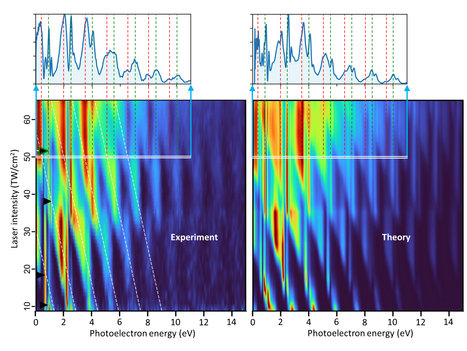
A similar behaviour was found for krypton atoms experimentally as well as theoretically, proving the more general relevance of under-barrier dynamics in strong laser fields. “The new findings expand our insights into the control of tunneling dynamics in laser spectroscopy and attosecond physics”, states Michael Klaiber, theory author of the paper. Moreover, the under-barrier resonances are also likely to induce similar substantial amendments and attosecond tunneling time delays in comparable scenarios, modifying, e.g., strong-field molecular, solid-state, and even high-energy tunneling quantum dynamics.

